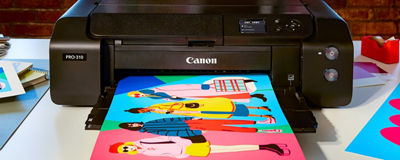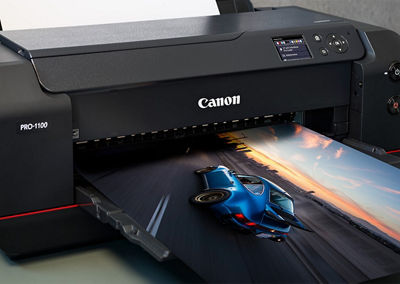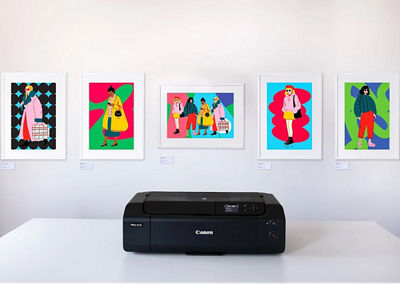What Makes an Ink “Archival”?

You’ve taken the time to compose, shoot, edit, and print your work. But how long will that print hold up?
If endurance matters - and it certainly does for gallery sales, portfolio work, and personal legacy - then the term archival becomes essential. It’s more than a buzzword. It refers to materials and processes that can help your prints stand the test of time.**
Let’s break down what archival really means—and how Canon’s pigment-based LUCIA PRO II inks can help make it possible.
Pigment vs. Dye: The Core Difference
When people talk about “archival ink,” what they’re usually referring to is pigment-based ink.
Unlike dye inks, which dissolve into paper fibers, pigment inks are made from microscopic solid particles that sit closer to the surface. That structural difference can make a major impact. Pigment inks are designed to be more resistant to:
- UV light exposure
- Humidity and moisture
- Airborne pollutants
Designed for less fading, greater stability, and more confidence that your print will look as good tomorrow as it does today.**
Canon’s imagePROGRAF PRO-1100 and imagePROGRAF PRO-310 printers use LUCIA PRO II pigment inks*, designed for color accuracy and long-term performance.** When paired with the right paper, they offer fade resistance to help with endurance as well.
What About Color Quality?
Pigment inks aren’t just designed to help your prints last—they deliver outstanding image quality, too. With Canon’s imagePROGRAF PRO-1100 and imagePROGRAF PRO-310 printers that use 10- and 12-color LUCIA PRO II ink systems*, you can see:
- Wider color gamut
- Deep, neutral blacks
- Smooth gradations and tonal transitions
Whether you’re printing rich landscapes, detailed portraits, or delicate black-and-white compositions, pigment inks are designed to give you the control and consistency professional output demands.

imagePROGRAF PRO-1100
Why Paper Matters, Too
Archival ink alone doesn’t make a print archival. The paper matters just as much.
Look for papers labeled “archival-quality” or “museum-grade” - ideally ones that are:
- Acid-free and lignin-free (designed to limit yellowing and deterioration)
- Made from cotton rag or alpha cellulose (tend to be more stable over time)
- Coated for optimal ink absorption and color fidelity
Finish plays a role, too - not just in visual feel, but in preservation.
- Glossy papers tend to reflect more light and boost contrast and vibrancy.
- Matte and textured papers tend to reduce glare and offer a softer, more nuanced appearance, with surfaces that tend to better resist fingerprints and environmental wear.
Canon offers a range of fine art and photo papers designed specifically for use with pigment inks. For true archival results, both ink and paper need to be up to the task.
Some Best Practices to Help with Longevity
To help get the most from your archival materials, consider these tips:
- Store prints properly: Use archival sleeves or acid-free storage boxes.
- Avoid direct sunlight: Even pigment inks will fade faster under constant UV exposure.
- Display behind UV-protective glass or acrylic: Adds another layer of protection.
- Control environment: Moderate temperature and humidity help prints last.

imagePROGRAF PRO-310
Print Like You Mean It
Whether you're selling a limited edition, preparing a gallery show, or creating heirloom-quality gifts, archival printing can help give your work the endurance it deserves.
With Canon’s imagePROGRAF PRO-1100 and imagePROGRAF PRO-310 printers, pigment-based LUCIA PRO II inks, and an extensive library of compatible papers and profiles, you have the tools to help you create work that looks incredible - and can hold up over time.**
Because if your work is worth printing, it’s worth preserving.
Learn More About Archival Ink
* Newly developed inks were used for 11 of the 12 inks except for matte black.
** Based on accelerated testing by Canon in dark storage under controlled temperature, humidity, and gas conditions, simulating storage in an album with plastic sleeves. Canon cannot guarantee the longevity of prints; results may vary depending on printed image, drying time, display/storage conditions, and environmental factors.


